Abstract
Virtual reality has taken the world by storm over the past decade where learners are allowed to gain experiences that are not possible with ordinary teaching methods. The interactive technological devices such as GeoGebra have made Euclidean geometry easy to understand by learners. The current study aimed to investigate the use of technology in the teaching of Grade 12 Euclidean geometry. This study used a four-dimensional model for teaching with technology in the investigation. All responses were averaged and normalised to produce an index for the measurement of the effective technology use in teaching of Euclidean geometry in Grade 12. The learning style of students contributes significantly to the use of technology in classes, particularly the audio-visual learning style. Bloemfontein showed a high number of learners ready to be taught through technology. However, this is in opposition to the teachers in terms of their age groups and enthusiasm to use technology. In Botshabelo and Thaba Nchu areas that were previously resource-disadvantaged, the current government has ensured that technological teaching resources are available where unfortunately their usage is not satisfactory, ranging from ‘maybe used’ to ‘less use of technology’ in teaching of Euclidean geometry in classroom. The authorities are therefore advised to hold technology workshops for senior teachers, reduce class sizes and tighten security in schools to avoid connecting and disconnecting of technological devices from one classroom to another to avoid wastage of teaching time.
Keywords: educational technology; Euclidean geometry; mathematics; effective index; teaching with technology.
Introduction
Mathematics has always been a bridge not only between science and technology but also between other subjects offered in formal education (UNESCO 2000). Traditionally, Euclidean geometry as a whole is a difficult subject for many students because it requires them to strictly reason from axioms, postulates and theorems rather than from their own experiences and intuitive understanding. Euclidean geometry in particular is a visual subject; therefore, students’ pen and paper diagrams have a limited scope in helping them make conjectures (Smith et al. 2007). Conjectures are mathematical statements that appear to be true based on observations, but have not been formally proven yet (Oesterlé & Masser 2011). In addition, Stols (2012) points out that appropriate use of technological tools, such as dynamic geometry software, can enhance teaching of mathematics and conceptual development and enrich visualisation whilst also laying a foundation for deductive proof. Mathspace (2016) defines deductive proof as a process of reasoning where a person makes conclusions based on previously known facts.
In South Africa, Euclidean geometry at Grade 12 constitutes approximately 33% of the final national mathematics paper which when learners perform poorly has a significant negative impact on the overall performance of learners’ paper 2 (Department of Basic Education 2012). In 2008, the National Curriculum Statement (NCS) was introduced in the South African education system curriculum, where Euclidean geometry was excluded. Hamilton and Hlabane (2016), mathematics teachers at the University of the Free State, reported that one of the reasons for the exclusion of Euclidean geometry was that many learners failed in it. They further said that many South African university engineering lecturers complained that learners without Euclidean geometry failed and could not cope with their studies. In response to this, the South African government introduced a revised curriculum called Curriculum Assessment Policy Statement (CAPS) in 2012 in which Euclidean geometry was brought back into curriculum. At present, this newly revised curriculum is in its fourth year of commencement, with three matriculation examinations of 2014, 2015 and 2016. In these 3 years of CAPS, the average performance of students in Euclidean geometry in the Motheo district was 43.66%, 37.75% and 40.75%, respectively (Department of Basic Education 2014, 2015, 2016). This is clear evidence that learners hardly cope with the Euclidean geometry topic. Katzman (2014) suggests that the use of computers can assist learners in the learning of Euclidean geometry. Department of Basic Education (2015) cautions that for learners to do well in Euclidean geometry time must be spent on making learners recognise the theorems using diagram through the use of technology. In contrast, Karen (2014) states that the use of technology in learning may result in learners’ poor study habits and development of lazy attitude towards education. The Free State province is one of the provinces in South Africa to take initiative in introducing Information and Communication Technology (ICT), such as Master Maths, Heymath! and an open access GeoGebra to increase teachers’ and learners’ productivity in mathematics (Noss n.d.). Despite all these initiatives, the learner performance in Euclidean geometry has been facing a downward to fluctuating downward trend. Therefore, the present study investigated the use of technology in the teaching and learning of Grade 12 Euclidean geometry. It firstly starts with the orientation of the study that sets the basis for the rest of this article.
Use of technology in mathematics teaching around the globe
In Austria, a study undertaken on teachers’ perceptions of technology in mathematics revealed positive changes over a period of 5 months of professional development under which they were subjected (Yates 2016). Yates (2016) further stated that these positive changes were mainly observed in access to technology in teaching and learning of mathematics, confidence in the use of technology in mathematics, and attitude and beliefs about the role and value of technology in teaching and learning of mathematics. Similarly, Bingimlas’s (2009), an Australian secondary mathematics teacher who participated in a survey on professional needs, experiences on the use of technology in teaching of mathematics were found convincing, and he was more convinced of technology benefits for students’ support to learn mathematics more effectively than conventional methods. On the contrary, Lew and Jeong (2013) noted that in South Korea much more work is to be carried out in having teachers’ positive perceptions towards the use of technology in teaching and learning of mathematics. These authors further assert that negative perception is rooted in the fact that teachers need more information and support to integrate technology in their teaching of mathematics. The most important finding in this study was the fact that teachers from urban areas were more confident and positive in the use of technology in teaching of mathematics than those from rural and semi-urban areas (Bennison & Goos 2010).
Use of technology in mathematics teaching in African schools
In Botswana, Nkhwalume (2013) noted that integration of ICT in teaching and learning of mathematics is faced with problems emanating from: (1) lack of or limited access to computers, (2) inadequate contact time for mathematics teaching and (3) lack of administrative support. This implies a limitation in the teaching of mathematics with technology. A study conducted by Kadzera (2010) in Malawi revealed similar results where teachers’ using technology in teaching of mathematics was limited because of lack of confidence in using technology and poor maintenance of computers and projectors. Swaziland, on the other hand, shares the same sentiments as that of Malawi and Botswana, where teachers’ objections to ICT integration in teaching and learning of mathematics are of external or institutional type. This implies that teachers were not using technology in their teaching of mathematics. The study by Simelani (2013) found the following: (1) the student–computer ratio was as high as 41:1; (2) 72% of teachers are with diplomas without ICT knowledge, (3) learners are incompetent in using technology to learn mathematics, (4) computers are outdated, (5) outdated computers are lacking maintenance and (6) lack of schools adopting ICT policies. Finally, the study concluded that no ICT is integrated in the teaching and learning of mathematics in Swaziland, thereby leading to poor results in mathematics. The implication of this is that learners are likely to perform poorly in Euclidean geometry. In Kenya, Kamau (2014) stated that secondary mathematics teachers were found with low levels of technology skills and training. This implies that learners are likely to perform poorly in Euclidean geometry in particular because the use of technology in teaching of mathematics offers visual presentation of geometric figures, hence promoting analytical geometric thinking.
Other obstacles to use technology in teaching of mathematics came from inadequate technology resources. In cases where there are technology resources, these resources are not used for the benefit of learners in studying mathematics but used by teachers for their private use for both teaching and learning (Kamau 2014).
Disadvantages of integration of computer technology in mathematics classroom
Whilst many educational experts have been touting technology integration in the teaching of subjects such as mathematics, however, it has shortcomings that can hinder both learning and educational processes. The problems include: (1) lack of support in case of trouble-shooting, (2) inadequate teaching methodology where many teachers are not conversant with the use of technological devices in classrooms and (3) loss of time in connecting teaching devices in classrooms (Akkus 2013). Other challenges include the following: (1) lack of access to hardware and software, (2) no immediate repairs of computers, (3) no obligation of the Department of Education to integrate computers into mathematics lessons and poor timetable of computer lessons, (4) lack of knowledge of mathematics technology, which may result in teachers not perceiving the usefulness of the technology and (5) lack of in-depth professional development in technology integration, which negatively impacts teachers’ practices such as expertise in planning, classroom technology management and classroom instruction (Polokoana 2012; Sinclair 2003). Many research scholars have quoted numerous advantages of technology integration in teaching and learning of mathematics; however, a similar number of arguments have arisen on the opposite end of this issue. Parents and educators must take caution in resorting to technology use in teaching and learning because these devices do not only leave fruitful effects but also give rise to health problems (Alina-Marilena 2016; Schwiebert 2010). The authors further add that learners usually suffer from eye strain and obesity because of lack of activity. This also hampers learners’ social interaction that also contributes to learning (Psycharis & Kynigos 2009). In addition, some problems include inequity and access, time to plan and implement technology and educators’ resistance to change (Montano 2015; Varank n.d.). Factors that contribute to this inequity to access to computers are geographic location of schools, socio-economic status, gender and various kinds of handicaps (Varank, n.d.). In the event learners having various physical differences, the use of technology may lead to frustration and failure, coupled with mathematics phobia (Moosavi 2009). Having discussed the problems encountered in the integration of technology with teaching and learning of mathematics, the next section focuses on the conceptual framework on which this study is based.
Conceptual framework
This section introduces a model for teaching with technology that was used as a conceptual framework for this study. According to Vaughan (2008), a conceptual framework is defined as a structure through which the key factors, concepts or variables of the whole study could be explained either graphically or in a narrative form based on the literature and personal experiences.
The main components of the proposed model are student, content, technology and instructor. This study therefore used a ‘Model for Teaching with Technology’ for drawing of the indicators for effective technology use in the teaching and learning of mathematics. Figure 1 depicts the main components and how they link with one another.
 |
FIGURE 1: A model for teaching with technology. |
|
Each component in the framework raises a number of issues that must be considered in order to integrate technology effectively into learning and teaching (Center for Research on Learning and Teaching 2008). For instance, the student component is analysed in terms of the technology skills levels that learners possess, access to technology and the learning styles adopted as shown below. Looking at the student component, humans have different ways of learning where some can assimilate in a better manner than others (Franzoni & Assar 2009). Of the several learning styles suitable for teaching with technology there exist visual-interactive, auditory-lecture and text styles. The visual interactive learning style is central to this study, and it is defined as a style that emphasises visual presentation of information to learners in the form of pictures, diagrams and animations (Pashler et al. 2016). In the visual learning style, teachers provide different media representations to each student (Franzoni & Assar 2009). Therefore, the implication for this study is that teachers must know the learning styles that their learners use to select the most appropriate technology for teaching. The level of technology skills in learners also plays a vital role in making teaching with technology a success. Learners who are able to use technology with ease do not make it easier for teachers to teach with technology but acquire a valuate skill to be used even post-school (Eisenberg & Doug 2002). One of the roadblocks to teaching with technology is the lack of access to these devices. Prior to technology use in classes, teachers must first ensure both learners’ learning styles and their access to these devices for effective use (American Federation of Teachers 2008). This therefore means that learners must access technology if teaching with technology has to be a success.
Content component
To use technology effectively in teaching, teachers must examine their: (1) course goals, (2) what they expect learners to learn from the course, (3) what skills and knowledge teachers want them to acquire by the end of the planned time, (4) the teaching strategies (lecture, discussion, group work, etc.) and (5) case studies that will best help learners achieve the lesson plan objectives. Once the teacher has answered all these questions, a suitable technology could be chosen. In order to make connections between goals of technology tools, it is necessary to turn to taxonomy levels revised by Arthur (2009). Objectives at lower levels of taxonomy involve acquisition of factual knowledge or development of basic comprehension. Higher-level learning involves skills such as analysis, evaluation and creation.
Methods and materials
This study used a triangulation mixed-methods research approach. However, quantitative approach was used predominantly.
In a quantitative research, an investigator relies on numerical data to test relationships between variables in a post-positivist philosophical worldview (Creswell 2007). According to Creswell (2007), qualitative research is an inquiry process of understanding where the researcher develops a complex, holistic picture, analyses words and conducts the study in a natural setting. Moreover, the goal of a qualitative research is to explore and understand a central phenomenon of the study in question. This approach is suitable for this study to reach the bottom of what contributes to the ineffectiveness of technology use in classes of mathematics. On the other hand, the triangulation mixed-methods design is defined as the phased design in which the researcher implements both quantitative and qualitative methods in the same timeframe with the view of best understanding the research problem (Creswell 2003). The following are some of the advantages of this design and the reasons why it was chosen in the present study: firstly, it makes intuitive sense; secondly, it is mostly referred by novice researchers; thirdly, it has become a framework for thinking about mixed-methods research; and fourthly, it is an efficient design in which both types of data are collected during one phase of research at roughly the same time and each type of data could be collected and analysed separately and independently using the techniques traditionally associated with each data type (Creswell 2003). This study therefore followed the triangulation mixed-methods design in which both qualitative and quantitative data were collected at the same time in order to best understand the phenomenon of interest (Creswell 2009:268).
Population
Population is defined as a set all possible elements from which data could be collected, observed and measured (Weiers 2010). In this study, 68 Grade 12 teachers of mathematics from 82 high schools in Motheo district of Free State province were chosen. The included schools were from three regions. All these schools offered Grade 12 studies in mathematics and had at least one technological device to use in the teaching and learning of the subject. The schools were considered as clusters in which a simple random sampling was applied to select mathematic teachers as representatives. The three selected regions were different socio-economically, and they also differed in educational resources. Each region was therefore regarded as a cluster.
Sampling techniques
Sampling is defined as the process of selecting representative units from a population of choice so that after conducting the study, a generalisation could be made about the population from which the sample was selected (Trochim 2008). The population size of choice for this study was 68 Grade 12 teachers of mathematics from 82 high schools of Motheo district. To determine a sample from this population, a confidence level must be specified. A confidence level is defined as a statistical number that expresses the degree of certainty that the selected sample of population represents from which it is drawn (Weiers 2010). The author also defines the significant level or the margin of error, which refers to the possible amount of error that is allowed in the study, and this normally ranges from 3% to 5%. The research chose 95% confidence interval (95% CI) with 5% margin of error, which gives a sample of 68 schools to be selected in the study. Therefore, in this study purposive sampling was used along with probability sampling techniques, and 68 Grade 12 mathematics teachers were drawn from 82 represented schools of three selected regions according to the ratio of the number of high schools in each region. All the high schools per region were listed and Microsoft Excel was used to generate random numbers to assign each school for selection. In this way the three regions were considered as strata from which individual schools were selected and represented by a participant mathematics teacher. The following equation was used to determine the sample size:
where:
n = the required sample size
N = population size and
e = margin of error (Weiers 2010:294).Then the sample size was determined as:
n = 82/(1 + 82 × 0.05 × 0.05) = 68 mathematics teachers from 82 schools.
Data collection
Data were collected by means of questionnaires that contain both close-ended and open-ended questions to capture quantitative and qualitative data, respectively. Questionnaires are data collecting tools capable of collecting large number of data from respondents in a short period of time, resulting in less cost (Popper 2009). The researcher and a few people could collect data using these tools, thereby minimising chances of invalidity and unreliability (Ackroyd & Hughes 1981). The questionnaires with open-ended questions were administered to participant teachers. Qualitative questions have an inviting quality and encourage authentic responses as well as two-way communication in both personal and professional relationships (Jo Ann 2010). An enhanced level of cooperation and understanding is facilitated and an opportunity is created for others to express themselves more openly and honestly. Moreover, respondents are encouraged to provide information, including their ideas, concerns and feelings, and assist in creating a positive learning and sharing experiences.
Data analysis and presentation
An index is defined as a composite statistic that measures changes in a representative group of individual data points and aggregates multiple indicators (Nardo et al. 2005). In this study, all scores per component from the selected framework were aggregated and marginal component indices were used to construct a composite technology use effectiveness index (TUI) per school. In literature, indices construction methods are developed from two main methods: methods with equal weights and methods with unequal weights (Bhattacharjee & Wang 2010). One of the most non-biased index computation methods is the Iyengar–Sudarshan method (Anon 2016). This is a method with unequal weights that ensures that large variation in any one of the indicators does not unduly dominate the contribution of the rest of the indicators, thereby distorting regional comparisons (Anon 2016). The values of computed indices in the Iyengar–Sudarshan method range between 0 and 1. The values 0 and 1 indicate zero and maximum technology effective use, respectively.
Various variables used in most research studies bear different units, and therefore values of all indicators must be normalised according to the functional relationship each variable has with the use of technology in Euclidean geometry (Etzkorn 2011). For increasing and decreasing functional relationship with focal point of research, normalisation was carried out using the following respective formulae:
and
where Xij is the value of the indicator j, corresponding to region i.
After indicator value normalisation, the Iyengar–Sudarshan method index equation was applied as follows:
where  is the weight. The weight is assumed to vary inversely with variance over regions in the respective indicators on vulnerability. The weights are therefore determined as: is the weight. The weight is assumed to vary inversely with variance over regions in the respective indicators on vulnerability. The weights are therefore determined as:
where c is the normalising constant such that
In this method, a suitable probability distribution is needed which takes values in the range [0, 1] and such a distribution is beta probability distribution, which is generally skewed. The density function of this function is given as:
where β(a,b) is a beta function defined by:
Given the right skewness of beta distribution, the following fractal intervals could be used in technology use effectiveness stage characterisation.
After index computation of each selected school as in Equation 3, k-means clustering using IBM Statistics SPSS V.24 was applied to classify schools according to their composite indices. A single index was then obtained for each cluster to fit into the stages shown in Table 1 prior to k-means clustering algorithm. A factor and item analysis was applied to identify misunderstood questions from the data collection tool.
| TABLE 1: Fractal stages of technology use in Euclidean geometry (%). |
A Technology Use Effectiveness Index (TUEI) was calculated from quantitative data and used to compare the three regions. The calculated index was contributed by four components from the adopted conceptual framework model, namely, student, technology, content and instructor. An item and factor analysis was conducted by SPSS to identify and eliminate items that are too easy and difficult in order to determine the items that belong together. Responses were recorded in three strata (regions), namely, Bloemfontein, Botshabelo and Thaba-Nchu. An analysis of variance (ANOVA) was conducted to test differences in mean values between groups (regions). The quantitative results were then presented as an index in tables. Schools were ranked according to their computed effective technology usage index.
Ethical consideration
This article followed all ethical standards for a research without direct contact with human or animal subjects.
Results and discussions
The extent to which mathematics teachers use technology in teaching of Euclidean geometry
Prior to determining the answer to the research question, ‘to what extent are teachers ready to use technology in the mathematics teaching?’, a Cronbach’s alpha reliability test was conducted for 10 variables in three regions as indicated and recoded in Table 2. The minimum accepted threshold value for Cronbach’s alpha coefficient was 0.70. The results of reliability test revealed a Cronbach’s alpha coefficient of 0.954, implying a high reliability of variable scores in three regions, hence the instrument used in the data collection. Table 3 shows the reliability test results from three regions, each with 10 variables.
| TABLE 2: Cronbach’s alpha reliability test statistics. |
| TABLE 3: Functional relationship of indicators with use of technology. |
In order to obtain a broad picture of the extent to which each region used the available technology in the teaching of Euclidean geometry, the value of each variable was averaged per region. It could be deduced from Table 4 that Bloemfontein schools are the least in technology usage in the teaching of Euclidean geometry in classes. Thaba Nchu and Botshabelo seemed to have a better use of these technological devices. One striking feature in the results is that Thaba Nchu and Botshabelo are more rural areas compared to Bloemfontein.
In any research, the collected variables bear various units which may cause difficulty in comparison. One of the most important technologies to avoid these problems is through normalisation of all participating indicator values. As indicated earlier, all variables were normalised in accordance with the effects of each on the phenomenon in question. Table 5 shows the results of normalisation computed from Equations 2 and 3. In order to avoid other variables dominating the final index, a weighted indicator method was employed, where the sum of all variables’ weights is a unit and constant determined to be 0.028 for all variables.
| TABLE 5: Normalised indicator scores across three regions. |
The index methodology used in this study assumes that the variables data follow a beta probability distribution. To avoid making wrong assumptions that variable values follow in beta distribution, an XLSTAT computer software program was used to fit these variables to determine whether a beta distribution was followed using a Chi-square test criterion. Table 6 shows the distribution test results with parameters. If the p-value is greater than the selected significant level of 0.05, then it is concluded that such a distribution fits well the data. The p-value = 0.297 > 0.05 implies that the study does not make assumptions but used the true results of distribution. These distribution results provide confidence to use the fractal intervals mentioned earlier for indices classification of TUEI.
| TABLE 6: Probability distribution (beta distribution). |
It can be seen from Table 7 that the district technology use index is determined to be 0.28, which is classified as moderate technology use in teaching and learning of Euclidean geometry. This result provides answer to the question of the extent of technological devices usage in the teaching of Euclidean geometry in mathematics classes in Motheo district. The results contradict the socio-economic status of these three regions where Thaba Nchu and Botshabelo are more rural than Bloemfontein. This could be linked with the past political regime where rural schools had teaching resources, and the current government has bridged such gaps. The situation is that more teaching resources are now mobilised for disadvantaged schools in rural areas.
| TABLE 7: Regional technology use effectiveness indices for teaching and interpretation of Euclidean geometry. |
The regional economic status to access technology in the teaching of Euclidean geometry
Table 8 shows ANOVA test to determine whether there were significant mean differences amongst Bloemfontein, Botshabelo and Thaba Nchu schools in terms of access to technological devices to be used in teaching of Euclidean geometry throughout the day. From the table, F-value = 12.262 with a corresponding p-value of 0.000. Because p = 0.000 < 0.05, it implies that the null hypothesis that all three regions have equal means is rejected. It is clear that the three regions are significantly different in terms of economic status to access technology. The used ANOVA test statistics applied to three or more groups in a single variable assume that such variable data are distributed normally.
Having established that a significant difference exists amongst the three regions, the regions’ mean values were ranked for further analysis. Table 9 shows the three regions’ economic viability to incorporate technology in teaching of mathematics. The results reveal Thaba Nchu as the most economically viable region to use technology in teaching of mathematics, followed by Botshabelo and Bloemfontein. The first two regions are less developed than Bloemfontein. This is probably because the government mobilised more of these technological resources to the previously disadvantaged schools in these two regions. One important feature of these results is that, although Bloemfontein is less viable economically to implement technology compared to other two regions, learners from this region are more ready to learn technology than those from Thaba Nchu and Botshabelo.
| TABLE 9: Schools’ economic viability to incorporate technology in teaching of mathematics. |
Challenges to implement technology in teaching of Euclidean geometry
Some of the challenges given by teachers of mathematics from all the three regions were, but not limited to, teachers’ computer illiteracy, time consumption in moving technological devices from one classroom to another, insufficient computers for all students, overcrowding and students viewing technological devices as television. Most of the schools indicated that because of lack of security of technological devices, they are forced to disconnect after every class, which leads to non-completion of syllabus. The computer illiteracy is contrary to the Department of Basic Education’s intervention to help improve teachers’ computer literacy through the Microsoft SchoolNet funded by Vodacom. However, these teachers suggested that computer workshops are to be held for teachers, especially for senior teachers, in order to help them implement technology usage with ease. In Thaba Nchu and Botshabelo, most teachers indicated security in schools as a worrying factor, but teachers used these gadgets for personal use more than the intended use in classes. More stringent measures are to be taken for schools provided with technological devices for their proper usage, but there is limited use of such devices. Increase in technological devices as well as reduction in class size could play a vital role in solving the problem of non-usage of technology in the teaching of Euclidean geometry, thereby increasing the pass rate of this topic which has proven to be a difficult task for many students. Another solution is that regular workshops should be conducted on Euclidean geometry through the usage of Geogebra software, which manipulates geometrical figures in an interactive manner to enhance learners’ understanding.
Conclusion and recommendations
The analysis of this study started with the exploration of the demographics of three regions from which representative school teachers of mathematics were sampled. Most of the teachers from Bloemfontein were men aged between 34 and 39 years. The most frequent and available softwares used for teaching of Euclidean geometry were Heymaths! and Geogebra. On the contrary, Botshabelo and Thaba Nchu had respondent teachers aged 28 to 33 years, which was much lower than that found in Bloemfontein. These differences account for the effective use of technology in the teaching of Euclidean geometry in classes because younger group of teachers feel much more comfortable with technology than elder and senior teachers. The learning style of learners contributes significantly to the use of technology in classes, particularly the audio-visual learning style. Bloemfontein showed a high number of learners ready to be taught through technology.
However, this is in opposition to the teachers’ age group and enthusiasm to use technology.
In Botshabelo and Thaba Nchu areas, which were previously resource-disadvantaged, the current government has ensured that technological teaching resources are available, but unfortunately the use of technology is not satisfactory, ranging from ‘maybe used’ to ‘less use of technology’ in the teaching of Euclidean geometry classes. This finding concurs with the answer to research question 2, where students of Botshabelo and Thaba Nchu have a better access to technology than Bloemfontein, although not used satisfactorily. The study concludes with recommendations versus challenges for effective implementation of technology in the teaching of Euclidean geometry. The authorities are therefore cautioned to hold technology workshops for senior teachers, reduction of class size and tighten security in schools to avoid connecting and disconnecting of technological devices from one classroom to another to avoid wastage of teaching time.
Acknowledgements
Competing interests
The author declares that no competing interests exist.
Author’s contributions
The author declares that he is the sole author of this research article.
Funding information
This research received no specific grant from any funding agency in the public, commercial or not-for-profit sectors.
Data availability statement
Data sharing is not applicable to this article as no new data were created or analysed in this study.
Disclaimer
The views and opinions expressed in this article are those of the author and do not necessarily reflect the official policy or position of any affiliated agency of the author.
References
Ackroyd, S. & Hughes, J.A., 1981, Data collection in context, Longman, London.
Akkus, M., 2013, Technology integration in the mathematics classroom and the faith project, viewed n.d., from http://drum.lib.umd.edu/bitstream/handle/1903/14957/Akkus_umd_0117N_14836.pdf?sequence=1&isAllowed=y
Alina-Marilena, C., 2016, Advantages and disadvantages of using computers in school, viewed n.d., from http://docslide.us/documents/advantages-and-disadvantages-of-using-computers-in-school.html
American Federation of Teachers, 2008, Access, adequacy, and equity in education technology: Results of a survey of America’s teachers and support professionals on technology in public schools and classrooms, National Education Association, Washington, DC.
Anon, 2016, Quantitative assessment of vulnerability to climate change: Computation of vulnerability indices, viewed 12 May 2017, from http://danida.vnu.edu.vn/cpis/files/Papers_on_CC/Vulnerability/Quantitative%20assessment%20of%20Vulnerability%20to%20Climate%20Change.pdf
Arthur, W.B., 2009, The nature of technology: What it is and how it evolves, Free Press, New York.
Bennison, A. & Goos, M., 2010, ‘Learning to teach mathematics with technology: A survey of professional development needs, experiences and impacts’, Mathematics Education Research Journal 22(1), 31–56. https://doi.org/10.1007/BF03217558
Bhattacharjee, D. & Wang, J., 2010, Assessment of facility deprivation in the households of the North Eastern States of India, viewed n.d., from http://www.csub.edu/~jwang/poster_IASP_A3.pdf
Bingimlas, K.A., 2009, ‘Barriers to successful integration of ICT in teaching and learning environment: A review of the literature’, Journal of Mathematics, Science & Technology Education 5(3), 235–345. https://doi.org/10.12973/ejmste/75275
Center for Research on Learning & Teaching (CRLT), n.d., A Model for Teaching with Technology, viewed 12 February 2017, from http://www.crlt.umich.edu/inst/model
Creswell, J.W., 2003, Research design: Qualitative, quantitative and mixed methods approaches, 2nd edn., Sage, London.
Creswell, J.W., 2007, Research design, p. 257, (studyguideS07/257), Bloemfontein.
Creswell, J.W., 2009, First steps in research, 3rd edn., Van Schalk, Pretoria.
Department of Basic Education, South Africa, 2012, Curriculum and Assessment Policy Statement (CAPS) FET band mathematics grades 10–12, Government Printing Works, Pretoria.
Department of Basic Education, South Africa, 2014, National senior certificate examination 2013: Schools subject report, Government Printing Works, Pretoria.
Department of Basic Education, South Africa, 2015, National senior certificate examination 2014: Schools subject report, Government Printing Works, Pretoria.
Department of Basic Education, South Africa, 2016, National senior certificate examination 2015: Schools subject report, Government Printers, Pretoria.
Eisenberg, M.B. & Doug, J., 2002, Learning and teaching information technology – Computer skills in context, ERIC Digest, viewed n.d., from http://www.ericdigests.org/2003-1/skills.html
Etzkorn, B., 2011, Data normalization and standardization, viewed n.d., from http://www.benetzkorn.com/2011/11/data-normalization-and-standardization/
Franzoni, A.L. & Assar, S., 2009, ‘Student learning styles adaptation method based on teaching strategies and electronic media’, Educational Technology & Society 12(4), 15–29.
Hamilton, J. & Hlabane, A.S., 2016, Teaching FET Phase Mathematics III (Algebra), University of the Free State [CD], Bloemfontein.
Jo-Ann, D., 2010, Open-ended questions build relationships, viewed n.d., from http://verysmartgirls.com/relationship-communication-skills/open-ended-questions-build-relationships.html
Joppe, M., 2000, The research process, viewed n.d., from http://www.ryerson.ca/~mjoppe/rp.html
Kadzera, C.M., 2010, ‘Use of instructional technologies in teacher training colleges in Malawi’, PhD thesis, Blacksburg, VA.
Kamau, L.M., 2014, ‘Technology adoption in secondary mathematics teaching in Kenya: An explanatory mixed methods study’, PhD thesis, Syracuse University.
Karen, R., 2014, Advantages and disadvantages of technology in education, viewed n.d., from http://occupytheory.org/advantages-and-disadvantages-of-technology-in-education/
Katzman, P.W., 2014, CAMP: Computer Assisted Mathematics Program: Geometry, viewed n.d., from Amazon.com
Lew, H.C. & Jeong, S.Y., 2013, Key factors for successful integration of technology into the classroom: Textbooks and teachers, Department of Mathematics Education Korea National University of Education South Korea, Seoul.
Mathspace, 2016, Deductive proofs, viewed n.d., from https://mathspace.co/learn/world-of-maths/geometry/deductive-proofs-6666/what-do-you-deduce-428/
Montano, J., 2015, The 6 pros & cons of using technology in your classroom, viewed n.d., from http://tophat.com/6-pros-cons-using-technology-classroom/
Moosavi, S.A., 2009, ‘A comparison of two computer-aided instruction methods with traditional instruction in freshmen college mathematics classes’, PhD thesis, Tuscaloosa, AL.
Nardo, M., Saisana, M., Saltelli, A. & Tarantola, S., 2005, Tools for composite indicators building, Joint Reseach Centre, European Commission, Italy.
Nkhwalume, A.A., 2013, ‘The challenges of integrating ICT into the mathematics curricula in the SADC region: The case of Botswana’, Academic Research International 4(2), 332–337.
Noss, R., n.d. Does technology enhance learning? Some findings from the UK’s technology enhanced learning (TEL) research programme, viewed n.d., from http://www.tlrp.org/docs/enhance.pdf
Oesterlé, J. & Masser, D., 2011, Rjlipton Game changing conjectures in mathematics, viewed n.d., from https://rjlipton.wordpress.com/2011/02/06/game-changing-conjectures-in-mathematics/
Pashler, H., McDaniel, M., Rohrer, D. & Bjork, R., 2016, Learning styles concepts and evidence, viewed n.d., from http://psi.sagepub.com/content/9/3/105.short
Polokoana, P.E., 2012, ‘Challenges and opportunities of technology integration into mathematics classrooms in GET/FET phase: Teachers’ perspectives’, MEd dissertation, Wits.
Popper, K., 2009, The logic of scientific discovery, reprinted (2004), Routledge, Taylor & Francis, New York.
Psycharis, G. & Kynigos, C., 2009, ‘Normalising geometrical figures: Dynamic manipulation and construction of meanings for ratio and proportion’, Research in Mathematics Education 11(2), 149–166. https://doi.org/10.1080/14794800903063349
Schwiebert, E.L., 2010, ‘Technology integration in primary classrooms in northwest Ohio’, MEd dissertation, Ohio.
Simelani, A.S., 2013, ‘Investigating the integration of ICT in mathematics and science in Swaziland classrooms’, MEd dissertation, UP, Pretoria.
Sinclair, M.P., 2003, ‘Some implications of the results of a case study for the design of pre-constructed, dynamic geometry sketches and accompanying materials’, Educational Studies in Mathematics 52(3), 289–317. https://doi.org/10.1023/A:1024305603330
Smith, R.C., Hollebrands, K.F., Iwancio, K. & Kogan, I., 2007, The effects of a dynamic program for geometry on college students’ understandings of properties of quadrilaterals in the Poincaré Disk Model, North Carolina State University, Raleigh, NC.
Stols, G., 2012, ‘Does the use of technology make a difference in the geometric cognitive growthof pre-service mathematics teachers?’, Australasian Journal of Educational Technology 28(7), 1233–1247. https://doi.org/10.14742/ajet.799
Trochim, M.K.W., 2008, Sampling, viewed n.d., from http://www.socialresearchmethods.net/kb/sampling.php
UNESCO, 2000, ‘Science, technology & mathematics education: A global perspective’, UNESCO International Science, Technology & Environmental Education Newsletter 12(3), 1–28.
Varank, I., n.d., Effectiveness of computers in the classroom and teachers training needs for successful integration of computers in education. viewed 24 March 2017, from http://www.efdergi.ibu.edu.tr/index.php/efdergi/article/viewFile/875/1592.
Vaughan, R., 2008, Conceptual framework, viewed 27 February 2015, from http//www.bournemouth.ac.uk.
Weiers, R.M., 2010, Introduction to business statistics, 7th edn., Cengage Learning, Independence, KY.
Yates, S.M., 2016, Changes in teachers’ perceptions of technology in mathematics, viewed 12 June 2016, from http://www.merga.net.au/documents/RR_yates.pdf.
|


 is the weight. The weight is assumed to vary inversely with variance over regions in the respective indicators on vulnerability. The weights are therefore determined as:
is the weight. The weight is assumed to vary inversely with variance over regions in the respective indicators on vulnerability. The weights are therefore determined as: